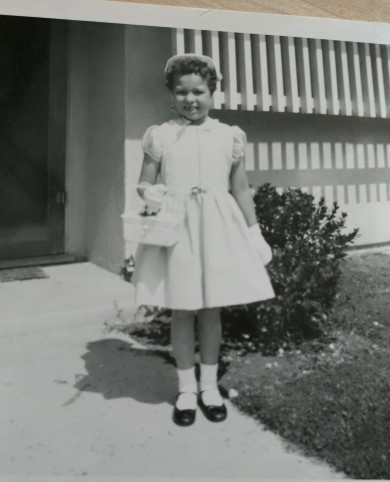By Jody Lee Collins —
The city of New Orleans has a singular reputation for “laissez les bon temps rouler” (“let the good times roll”) no matter what time of year. During Mardi Gras, though, the celebrations take on an over-the-top frenzy that is hard to match. It is also somewhat hard to believe unless one is actually there in person to witness the city’s crazy times.
We lived in New Orleans in the 1970’s and saw this dress-up carnival cum Halloween celebration firsthand. Mardi Gras (French for ‘Fat Tuesday’) offers the citizens and umpty zillion of their best friends to dress up, dance and drink, throw candy and don beads. There are parades uptown, downtown, in the suburbs, everywhere.
I think I still have some beads (certainly none of the candy) from one of those parades. I also have snapshots of folks in the crowds during one bawdy celebration—I’ve never seen so many grown-ups in costume. In New Orleans many of the folks live for Mardi Gras, its year round preparation and presence synonymous with their fair, old city.
In theory, Mardi Gras (on February 13th) is a day to indulge one’s senses, for the next day—Ash Wednesday—is to be one marked by ashes and repentance.
Ash Wednesday begins the season of Lent, the forty days of prayer and fasting observed by many faith traditions. The juxtaposition of Valentine’s Day and Ash Wednesday is a bit of a conundrum this year since they fall on the same day. Lenten practices are intended to prepare our hearts for the celebration of Easter, but like the candy and costumes on Mardi Gras, the overwhelm of the world has overshadowed the meaning of Lent. All that Valentine’s candy doesn’t help.
When I was growing up, Easter Sunday meant See’s candy eggs and Easter baskets and new dresses, complete with hats and gloves. My siblings and I probably went to church for the occasion–obviously, look at these cute photos–but my memories of that holiday have much more to do with fashion, not my faith.
When I became a Christian in the 70’s, the reflective period of Lent was not included in our non-denominational worship. I missed out on those early church practices that take us from the darkness of Good Friday to the light and glory hallelujah of Easter. But it is good to remember that joyous Sunday comes at a cost—the death and burial of Jesus—on our behalf.
So, how are we to Lent? (I realize Lent is a noun, not a verb. I borrowed that from my friend Seth Haines.)
It is good for us to sit in the dark sometimes while we contemplate the light of Jesus that has come into the world. It is also good for us to contemplate our own dark places. Where have we let sin creep in? Those shortcuts we use to circumvent God’s work in our lives? I often fall into the trap of meeting my needs my way, attempting to satisfy God-breathed longings with works and ways of my own devising. I’m thankful when the Holy Spirit reminds me of that.
What else can we do?
Sitting in silence while we seek the Holy Spirit’s still, small voice and dedicate ourselves to listen is a first step. Be aware of God showing you what practices you can leave or lay down to turn your focus back to God. Fasting and prayer can also be part of the equation.
But fasting doesn’t have to be from physical food. Consider those soul-filling ‘foods’ that have taken the place of God’s presence. Is there something getting in the way of hearing Him? Fast from the noise of social media—my frequent nemesis. (My word for the year is ‘listen’, the same letters in the word ‘silent’, as a friend pointed out.)
Put down your phone and take a walk.
Go outside, sit on your deck, look out the window.
(Talking to myself here.)
Put off, lay aside, turn off–all are ways to deny our flesh, that Christianese phrase for fasting. But the beauty of fasting is the welcoming way those spiritual practices create space for God to to be the One who feeds us and fills us.
When Ash Wednesday and Valentine’s Day coincided (collided?) with each other last week, how about this? “…celebrate your love by committing to a season of intentional preparation for your Love of loves.” -Seth Haines
When you sign or send or see a paper or candy heart, think about giving your heart to God, wholly and completely. Just like He gave to us.
That’s how to live in the season of Lent.



